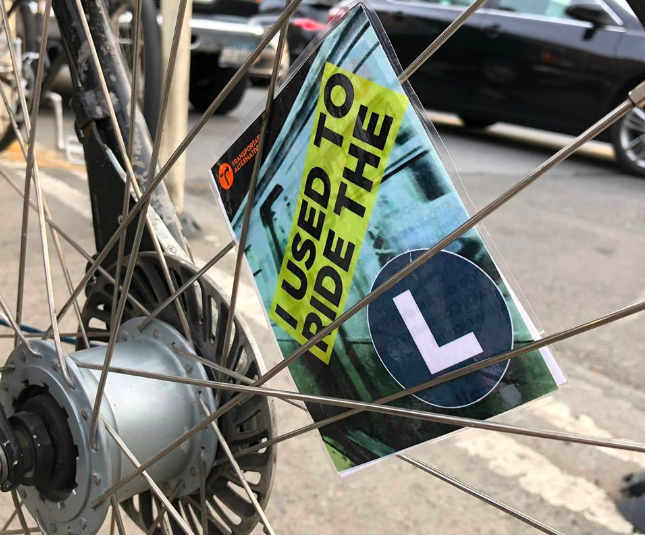One Important Thing in a Public Health Crisis: Safe Transportation

If you’re skipping the train during the coronavirus crisis, it’s time to ride the bike train.
Cycling advocates in north Brooklyn and western Queens will lead mass rides on Wednesday to not only turn a commute into a show of solidarity in the face of a pandemic and a mayor who has not yet moved to make the streets safer for cyclists and pedestrians, but also help new cyclists feel confident hitting the road for the first time during the crisis.
The Brooklyn bike train will meet at Sun and Air bike shop on Driggs Avenue at 8 a.m. on Wednesday, before the group heads over the Williamsburg Bridge and splits into groups headed north, south and west in Manhattan. The Queens train will meet at John Vincent Daniel Jr. Square (the corner of 43rd Ave & 51st Street) at 8:15 a.m., and that group will head toward the Queensboro Bridge before guiding you where you’re headed in Manhattan.
“If you have to get to work, it is a form of social-distancing commuting,” said volunteer bike train conductor and regular bike commuter Noel Hidalgo.
A “group ride into Manhattan” sounds bad on its face in the Age of Plague, but federal experts say you can be around people, as long as you give them a little space.
“The CDC recommendations are to keep six to 10 feet away from other people,” Albert Ko, the chairman of the epidemiology department at the Yale School of Public Health told The Atlantic about social-distance techniques.
For those of you who want to learn how to bike commute but from a distance, Courtney Williams, aka the Brown Bike Girl, is hosting classes on Facebook Live each day this week. Williams said she’ll teach you things like what to pack for your ride and how to fix a flat tire.
Heres a rough list of #bikecommuter topics Im going to share :
Mon: packing your commuter/ flat fix kit
Tues: change a flat tire (w/ said kit)
Wed: carrying stuff
Beyond: TBDYep 8pm ET Facebook live. #thebrownbikegirl page. Free bike commuting tips.#teacherspirit
— Courtney Williams (@BrownBikeGirl) March 16, 2020
Should your boss insist on grinding you under the wheels of capitalism in person and not virtually, you might as well at least show up on some wheels of your own. Even Mayor de Blasio has suggested that people should bike to work if they can, and the MTA has supported the idea of not riding the train if you have other options. Would those other options be easier if say, it was legal to ride over MTA-owned bridges or if the Port Authority treated its bike bike paths like it does its car lanes (i.e. keep them open 24 hours per day)? Yes.
And it would also be easier if the mayor let the Department of Transportation act on Transportation Alternatives’ recommendations on how to keep cycling safe during the current riding boom:
- create a zero tolerance policy on vehicles — city-owned, private, or commercial — blocking bike lanes, and cease any cycling-specific NYPD ticket stings. (The mayor said earlier this year that he would create a Vision Zero Unit within the NYPD, but no details of that unit, or its efforts, have been provided.)
- build pop-up bike lanes, like those deployed during the UN General Assembly last September
- quickly reconfigure key East River crossings, including dedicated, separated cycling paths on the Brooklyn and Queensboro bridges. The Queensboro Bridge is especially crowded because pedestrians and cyclists share a single path on the north side of the bridge. The numbers of walkers and cyclists were increasing on that span even before the current crisis.
- fast-track permitting and construction of sidewalk and on-street bike parking, and require that office buildings allow employees to enter with bikes
- expedite the expansion of Citi Bike in underserved neighborhoods, roll out more stations and bike valets in Manhattan’s Central Business District, and subsidize a Citi Bike discount program to incentivize new riders.
It remains unclear if the city will do any of those things — and certainly not soon enough to keep new cyclists safe. So at least the cycling community is doing its part.
Brooklyn bike train, Sun and Air Bike Shop, 788 Driggs Ave. between S. Third and S. Fourth Sts. Wednesday, March 18, 8 a.m.; Queens bike train, John Vincent Daniel Jr. Square (the corner of 43rd Ave & 51st St.), Wednesday, March 18, 8:15 a.m.





